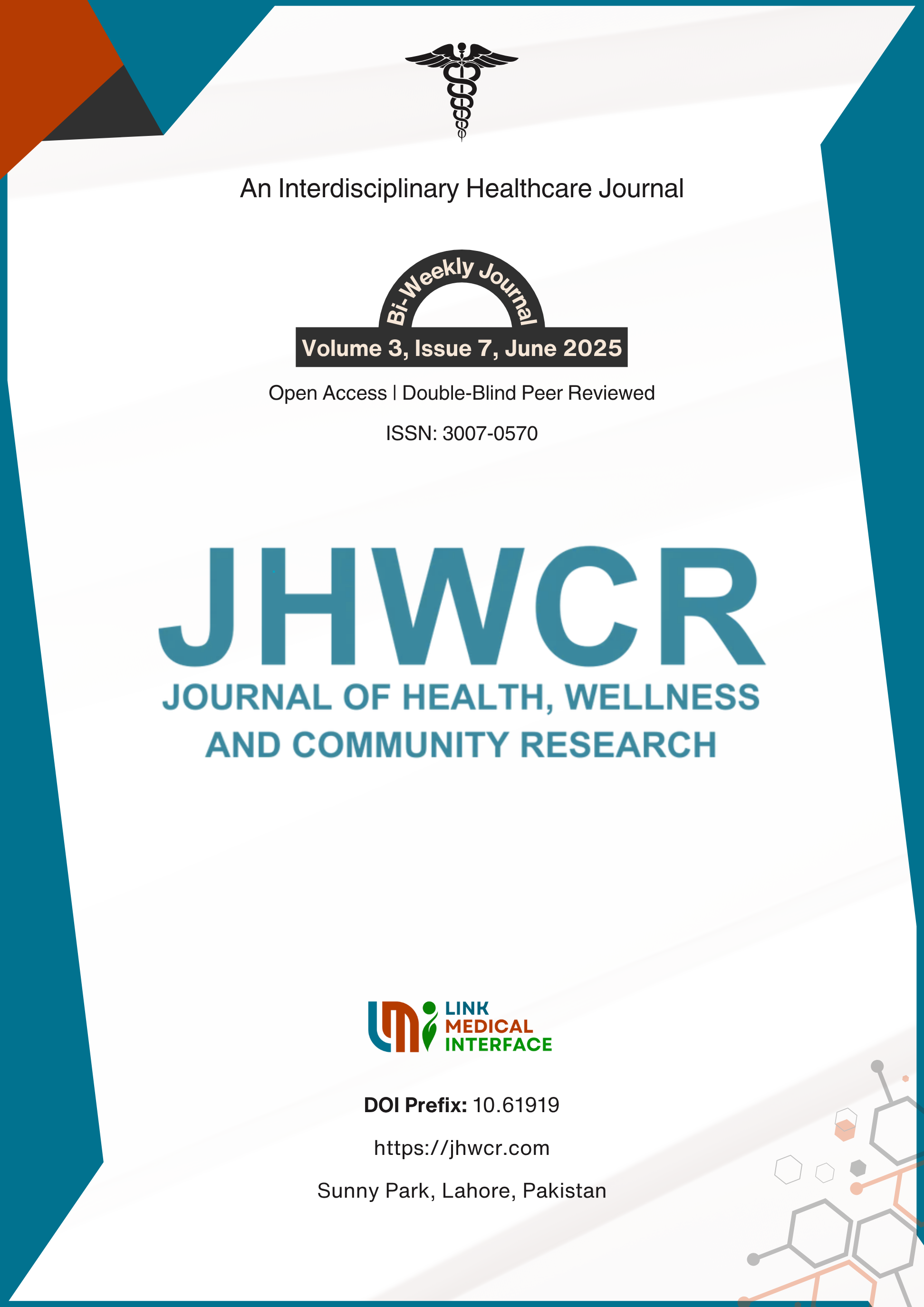Knowledge of Tele-Practice Among Health Professionals Working with Developmental Delayed Child
DOI:
https://doi.org/10.61919/pgasme96Keywords:
Telemedicine, Developmental Disabilities, Pediatric Rehabilitation, Healthcare Access, Health Personnel, Attitude of Health PersonnelAbstract
Background: Tele-practice has emerged as a vital modality for delivering health services, particularly to pediatric populations with developmental delays, yet limited data exist on its integration into clinical practice in resource-constrained settings. Understanding health professionals’ knowledge and perceptions is essential to guide implementation strategies and address systemic barriers. Objective: This study aimed to assess the knowledge, attitudes, and utilization of tele-practice among health professionals working with developmentally delayed children, evaluating perceived barriers and variations across clinical disciplines and experience levels. Methods: A cross-sectional observational study was conducted at the Department of Developmental Pediatrics, Children's Hospital and Institute of Child Health, Lahore, from August 2020 to July 2021. Using consecutive sampling, 100 professionals with ≥2 years of pediatric clinical experience—including speech-language pathologists, physiotherapists, psychologists, and special educators—completed a validated 12-item questionnaire. Data were analyzed using IBM SPSS Version 25. Descriptive statistics and Chi-square tests (p<0.05) were employed to explore group-wise associations. Ethical approval was obtained per the Helsinki Declaration. Results: Among participants, 87% reported fair knowledge of tele-practice, while only 34% actively used it. Statistically significant associations were found between professional role and support for tele-practice resources (p=0.005), and between tele-practice knowledge and recognition of population-specific applicability (p=0.004). Barriers included caregiver reluctance and patient digital literacy. Conclusion: Although health professionals demonstrated high tele-practice awareness, actual implementation remains limited. Bridging this gap requires training, caregiver engagement, and infrastructural support to enhance service delivery for children with developmental delays.
Downloads
Published
Issue
Section
License
Copyright (c) 2025 Journal of Health, Wellness and Community Research

This work is licensed under a Creative Commons Attribution 4.0 International License.


